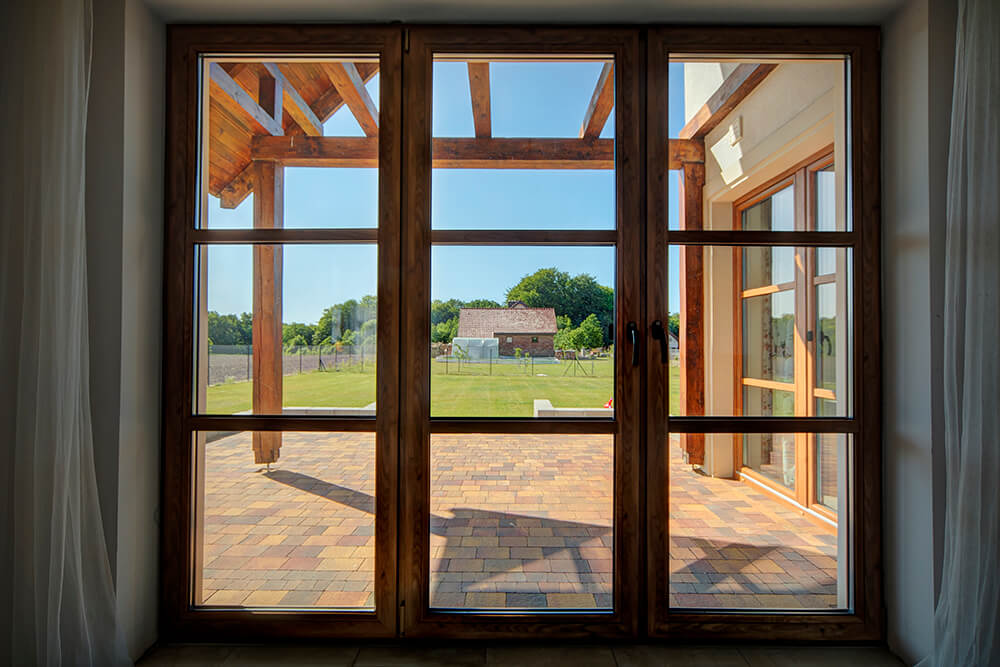with due to the extensive construction and transport infrastructure, noise protection is becoming increasingly important in our lives. Therefore, windows should not only provide an adequate amount of light in the room and have good thermal insulation, but also protect the house from external noise. The noise damping factor is used to determine to what extent the shaft insert suppresses the sound.
What does the window’s noise suppression ability depend on?
The sound insulation of the window undoubtedly depends on the glass used. The following factors primarily influence how well the shaft insert copes with noise suppression:
- type of glazing (uniform or laminated,with or without acoustic film),
- the order in which the individual windows are placed in the contribution,
- the thickness of each glass used,
- distance between individual glass panes (width of the spacer frame),
- type of gas filling interstage spaces,
- surface of the glass.

How does noise affect our body?
Noise is measured in units called decibels (dB). It is worth knowing that our ears do not receive sounds of excessive intensity in a linear way. For example, a noise reduction of 3 dB is felt to a small extent, while a reduction in the sound intensity level of 10 dB is considered as a halving of noise. There is no doubt that noise has a bad effect on us. It causes fatigue, nervousness and reduced work efficiency. In addition, sounds of very high intensity can cause hearing damage and impaired functioning of the nervous system.

What does the noise suppression factor say?
The noise suppressionfactorR w, also referred to as the sound insulation indicator, is a parameter that indicates the difference between external and internal noise. Its value is calculated as a weighted average of sixteen measurements carried out for different sound frequencies. It is given with two parameters – C and Ctr. They reduce the value of the sound insulation indicator depending on the type of noise source. Parameter C is called a spectral adaptive indicator for high- and medium-frequency sounds, such as a flying aircraft or close traffic. Ctr is a spectral adaptive indicator for low and medium frequency sounds. It shall be used m.in. for suppressed music and remote traffic.
Example:
Rw(C;Ctr) = 40 dB(-1;-2)
In the example shown, parameter C reduces the value of the sound insulation index by 1 dB and Ctr by 2 dB.
Sound-absorbing sound insulation
The following tables show the properties of the most popular sound-absorbing glass.
Single-chamber windows |
||||||
|---|---|---|---|---|---|---|
| Acoustic insulation[dB] | Construction of the glass | |||||
| Rin | Rin | C. | Ctr | Glass #1 | frame | Glass #2 |
| 35 | 35 | -2 | -7 | 6 | 16Ar | 33.1 |
| 36 | 36 | -2 | -6 | 8 | 16Ar | 4 |
| 37 | 37 | -1 | -5 | 44.2 | 16Ar | 4 |
| 38 | 38 | -1 | -5 | 8 | 14Ar | 6 |
| 39 | 39 | -1 | -5 | 44.1A | 16Ar | 4 |
| 40 | 40 | -1 | -4 | 8 | 20Ar | 44.2 |
| 41 | 41 | -2 | -6 | 8 | 12Ar | 44.1A |
| 42 | 42 | -2 | -6 | 44.2A | 20Ar | 6 |
| 43 | 43 | -2 | -6 | 55.2A | 20Ar | 6 |
| 44 | 44 | -2 | -6 | 44.1A | 20Ar | 8 |
| 45 | 45 | -1 | -4 | 10 | 16Ar | 66.2A |
| (33.1; 44.1; 44.2; 55.2, 66.2) ? laminated glass; A ? acoustic film | ||||||
Double-chamber glazing |
|||||||
|---|---|---|---|---|---|---|---|
| Insulation [dB] | Construction of the glass | ||||||
| Rin | C. | Ctr | Glass #1 | frame | Glass #2 | frame | Glass #3 |
| 35 | -1 | -6 | 4 | 12Ar | 4 | 12Ar | 33.1 |
| 36 | -2 | -6 | 33.1 | 12Ar | 6 | 12Ar | 4 |
| 37 | -2 | -6 | 8 | 12Ar | 6 | 12Ar | 6 |
| 38 | -1 | -5 | 8 | 12Ar | 4 | 12Ar | 6 |
| 39 | -2 | -7 | 10 | 12Ar | 6 | 12Ar | 4 |
| 40 | -2 | -7 | 6 | 12Ar | 6 | 12Ar | 44.2 |
| 41 | -3 | -8 | 6 | 12Ar | 6 | 12Ar | 44.2A |
| 42 | -1 | -6 | 6 | 12Ar | 4 | 12Ar | 44.2A |
| 43 | -2 | -6 | 8 | 12Ar | 6 | 12Ar | 55.2 |
| 44 | -2 | -7 | 8 | 12Ar | 6 | 12Ar | 55.2A |
| 45 | -2 | -7 | 44.4 | 14Ar | 4 | 14Ar | 44.4A |
| (33.1; 44.1; 44.2; 55.2, 66.2) ? laminated glass; A ? acoustic film | |||||||
The following conclusions can be drawn from the above tables:
- the variation in the thickness of individual windows in a single contribution achieves a higher rate of sound insulation;
- the increase in the thickness of the glass pane has a beneficial effect on the noise suppression of the glass insert;
- the use of acoustic film in laminate shafts makes the cartridge better protection against noise.
Acoustic insulation of the window and frame design
These parameters do not apply to the entire window, but only to shaft inserts. The result r-valuefor the complete element is also influenced by the construction of the frame structure. In the case of shaft inserts with a weakernoise attenuation capacity (R in ? 40 dB), the frame design contributes to an increase in the value of the total sound insulation index. If, on the other hand, the cartridge better dammesnoise (R > at 42 dB), the frame design reduces the ability to suppress noise through the window. In such a situation, it has poorer insulating properties compared to the glass.


